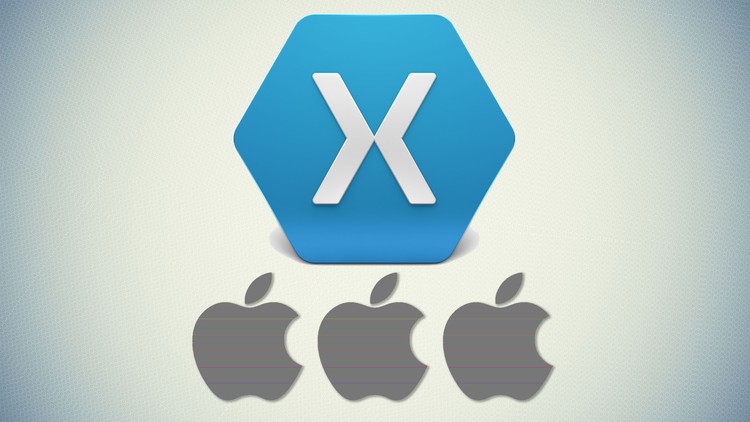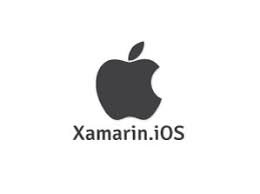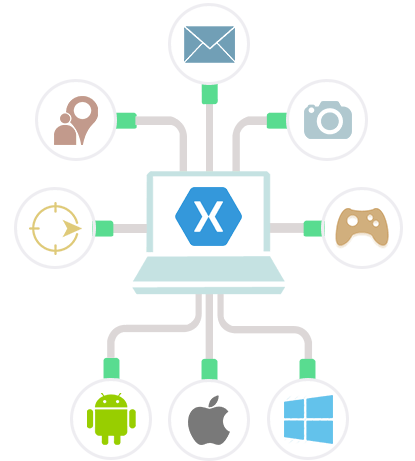Xamarin iOS App Development

While making iOS applications, designers ordinarily swing to the dialects and IDE gave by Apple: Objective-C/Swift and Xcode. In any case, this isn't the main choice—you can make iOS applications utilizing an assortment of dialects and structures.
A standout amongst the most well-known alternatives is Xamarin, a cross-stage structure that enables you to create iOS, Android, OS X and Windows applications utilizing C# and Visual Studio. The real advantage here is Xamarin can enable you to share code between your iOS and Android application.
Xamarin has a major favorable position over different cross-stage systems: with Xamarin, your undertaking orders to local code, and can utilize local APIs in the engine. This implies an elegantly composed Xamarin application ought to be undefined from an application made with Xcode. For more subtleties, look at this extraordinary Xamarin versus Local App Development article.
Xamarin had a major burden too in the past as well: its cost. In light of the lofty permitting cost of $1,000 per stage every year, you'd need to surrender your day by day latte or frappuccino to try and consider managing it … and programming without espresso can get perilous. In view of this precarious cost, as of not long ago, Xamarin bid generally to big business ventures with huge spending plans.
A standout amongst the most well-known alternatives is Xamarin, a cross-stage structure that enables you to create iOS, Android, OS X and Windows applications utilizing C# and Visual Studio. The real advantage here is Xamarin can enable you to share code between your iOS and Android application.
Xamarin has a major favorable position over different cross-stage systems: with Xamarin, your undertaking orders to local code, and can utilize local APIs in the engine. This implies an elegantly composed Xamarin application ought to be undefined from an application made with Xcode. For more subtleties, look at this extraordinary Xamarin versus Local App Development article.
Xamarin had a major burden too in the past as well: its cost. In light of the lofty permitting cost of $1,000 per stage every year, you'd need to surrender your day by day latte or frappuccino to try and consider managing it … and programming without espresso can get perilous. In view of this precarious cost, as of not long ago, Xamarin bid generally to big business ventures with huge spending plans.
Other than expense (or deficiency in that department), Xamarin's different ideas incorporate enabling developers to:
In the event that your application requires stage explicit highlights or plans, use Xamarin.iOS apps, Xamarin.Android and other stage explicit modules to get immediate communication with local APIs and systems. These modules give the adaptability to make custom UIs, yet still, permit sharing of regular code crosswise over stages.
In this instructional exercise, you'll use Xamarin.iOS to make an iPhone application that shows a client's photo library.
This instructional exercise doesn't require any earlier iOS or Xamarin advancement experience, yet to take full advantage of it you'll require an essential comprehension of C#.
- Leverage existing C# libraries and apparatuses to make portable applications.
- Reuse code between applications on various stages.
- Share code between ASP.Net backends and client confronting applications.
In the event that your application requires stage explicit highlights or plans, use Xamarin.iOS apps, Xamarin.Android and other stage explicit modules to get immediate communication with local APIs and systems. These modules give the adaptability to make custom UIs, yet still, permit sharing of regular code crosswise over stages.
In this instructional exercise, you'll use Xamarin.iOS to make an iPhone application that shows a client's photo library.
This instructional exercise doesn't require any earlier iOS or Xamarin advancement experience, yet to take full advantage of it you'll require an essential comprehension of C#.


Beginning
To build up an iOS application with Xamarin and Visual Studio, you'll in a perfect world need two machines:1. A Windows machine to run Visual Studio and compose your venture's code.
2. A Mac machine with Xcode introduced to go about as an assemble have. This doesn't need to be a committed PC for structure, however, it must be organized available amid advancement and testing from your Windows PC.
It extraordinarily helps if your machines are physically close to one another since when you construct and keep running on Windows, the iOS Simulator will stack on your Mac.
I can hear some of you saying, "Imagine a scenario in which I don't have the two machines.
- For Mac-just clients, Xamarin provides an IDE for OS X, however, in this instructional exercise, we will concentrate on the glossy new Visual Studio support. So on the off chance that you'd like to track, you can run Windows as a virtual machine on your Mac. Instruments, for example, VMWare Fusion or the free, open-source VirtualBox make this a successful method to utilize a solitary PC.
On the off chance that utilizing Windows as a virtual machine, you'll have to guarantee that Windows has organized access to your Mac. When all is said in done, in the event that you can ping your Mac's IP address from inside Windows, you ought to be a great idea to go.
- For Windows-just clients, go purchase a Mac at the present time. I'll pause! :] If that is impossible, facilitated administrations, for example, MacinCloud or Macminicolo give remote Mac access to the building. This instructional exercise accept you're utilizing separate Mac and Windows PCs, however, don't stress—the directions are fundamentally the equivalent in case you're utilizing Windows inside a virtual machine on your Mac.
The Good and The Bad of Xamarin Mobile Development
While considering iOS or Android application improvement, the vast majority of us consider Objective-C versus Swift, and Java most importantly. Being viewed as local tech stacks, they are normally regularly utilized versatile improvement instruments with regards to iOS and Android application advancement. In any case, there are more approaches to assemble performant and easy to use portable applications. What's more, Xamarin is one of them. In this article, we lead a top to bottom Xamarin survey and contrast it with local and cross-stage portable advancement arrangements available. In the event that you know the nuts and bolts, consider jumping to the areas you are keen on.Stars of Using Xamarin for Development
- One Technology Stack to Code for All Platforms


- Performance Close to Native
- Native User Experiences
- Full Hardware Support
- Open Source Technology with Strong Corporate Support
